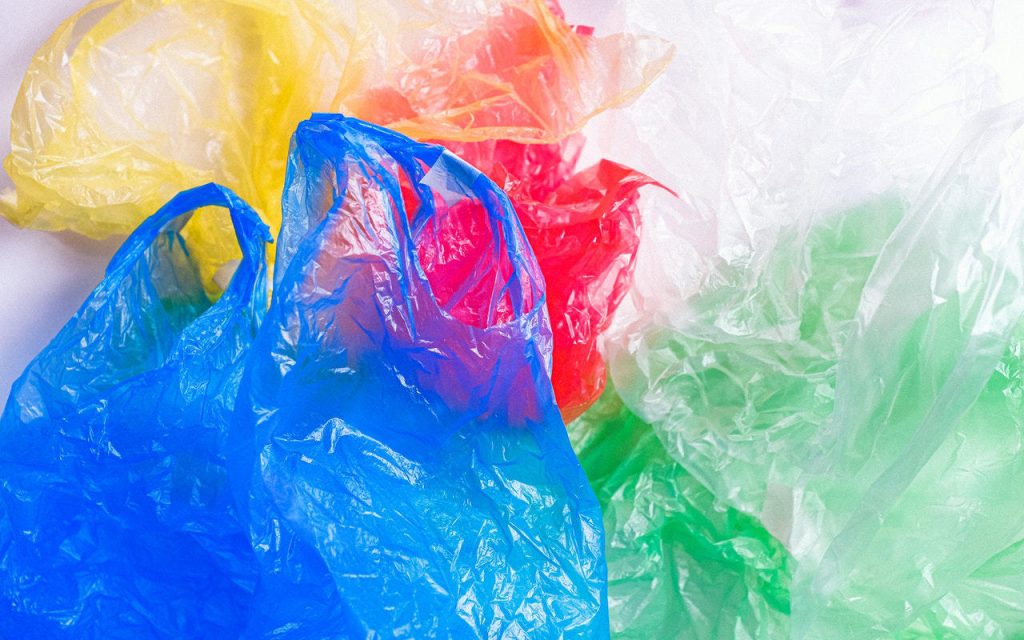Polythene is the most common plastic in the world, and the reason we have access to fresh, quantified food and water on demand. It protects items in transit and storage, and comes in countless forms: bottles, containers and of course, polythene bags.
Polythene bags are everywhere; in fact, it’s almost impossible to go a day without encountering one. Why? Because they are hugely economically important – and without them, normal life would shut down. No, really! Polythene (and the humble poly bag that makes use of it) is one of the most important inventions of all time.
But what are polythene bags, exactly? Why are they so important? Where did they come from – and will they always be around?

The history of polythene bags
In 1898, German chemist Hans von Pechmann accidentally created a white, waxy substance while he was investigating another chemical compound. This was the very first time polythene was synthesised in recorded history. Hans von Pechmann’s colleagues studied the substance, and termed it polymethylene – and the story stopped there for some 35 years.
Then, in 1933, two men (Eric Fawcett and Reginald Gibson of Imperial Chemical Industries, England) accidentally created the substance again. They were intrigued, but couldn’t repeat their discovery, no matter how hard they tried. That was until 1935 when fellow ICI chemist, Michael Perrin, developed their accidental discovery into a process for creating polythene; one that became the basis for industrial production, which began in 1939.
But when World War II broke out, all production stopped – and the newly discovered material was veiled in secrecy. During the war, polythene was used to make insulation for the cabling of radar equipment because of its low-loss properties at very high frequency radio waves.
After the war, landmark breakthroughs in catalysts, notably by German chemist Karl Ziegler, refined the production process from the 1950s through to the 1970s. The speed and cost of production were cut dramatically, and the range of polythene materials was greatly increased, which made it infinitely more versatile.
With speed and lower costs came greater availability. And polythene became a miracle material for packaging. High strength and durability, excellent protective qualities and water resistance made it the dream material for packaging all kinds of items: from food to electronics.
Never before had there been a material so strong, light, protective and cheap. Of course, it became a convenience material – replacing paper bags in favour of polythene bags, in almost all applications. In bulk, polythene bags can cost a fraction of a penny each.
This is why polythene bags are so economically important. They’re low cost, yet high value. From shipping products around the world to carrying your shopping home, polythene bags have taken over the planet.
But as we’ve discussed before, that’s not entirely a good thing (read our blog post about the plastic problem) – but we really don’t have much of a choice for now.
Why do we still need to use polythene packaging?
In another blog post, we covered plastic packaging alternatives – including so-called biodegradable plastic, which can take exactly the same time to decompose as normal polythene.
The balance and trade-offs of alternatives make them less viable than they first appear. For example, paper and cardboard are heavier and more expensive, and offer no moisture protection. Plus, paper and card can’t be recycled more than a handful of times.
Bioplastic is expensive, requires specific (and energy-intensive) composting conditions to break down, and requires more natural resources to produce.
There still isn’t a cheap, effective solution to replace polythene bags. But if industry and individuals learned more about how plastic packaging is recycled, and adopted best practices, the environmental impact of polythene could be greatly reduced while a true alternative is created.
The future of plastic packaging: will we always need polythene?
The future of the poly bag is unclear. It’s been vilified and demonised as the harbinger of environmental damage – but the problem is cultural and industrial, not the material itself. It can be repurposed, recycled, and reused. It can be incinerated and turned into power. But that doesn;t change the fact that this rarely happens.
No, it doesn’t make it right to throw around whataboutery, but when it comes to environmental impact, improper polythene and plastic disposal is just one of countless issues. If all end-of-life polythene bags were recycled by end users (and if facilities were widespread enough to allow full recycling), then the problem would be greatly reduced.
But what about the next material? Will there ever be one?
Well, so far we don’t have much to show. Nanocellulose, made from plant fibres, was tipped to be the next big thing. But even after decades of research and development, we have yet to see it in commercial use as a viable plastic replacement.
New technologies are emerging for the permanent destruction of plastic, using naturally-occurring bacteria, but this is still brand new tech.
For now, recyclable polythene bags are the best course of action – at least until a new material can match the, performance, versatility and economy of polythene.
Fully recyclable polythene bags
Keep the future alive, with fully recyclable polythene bags from NPF Packaging. Get a quote now, or call us on 01773 820415.


